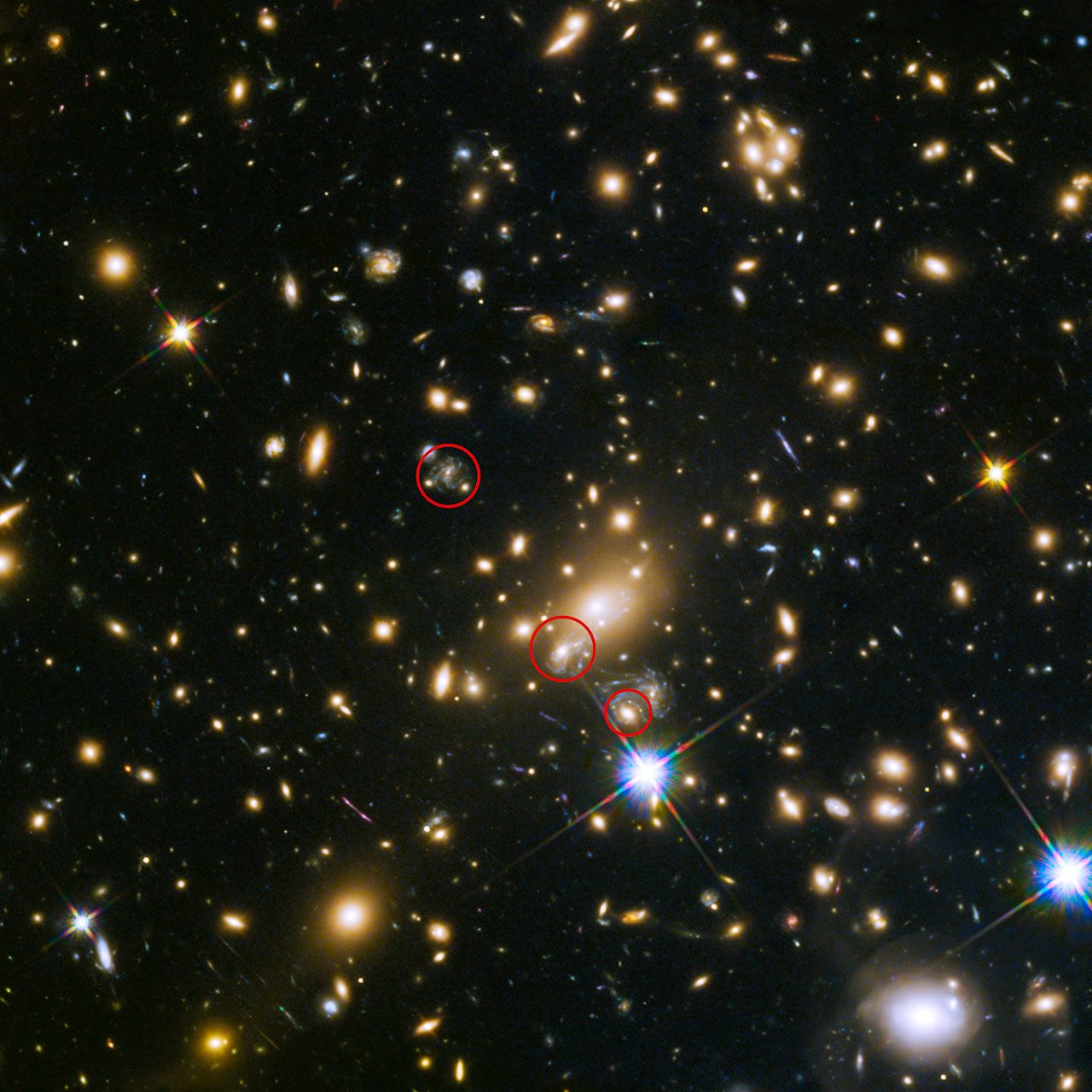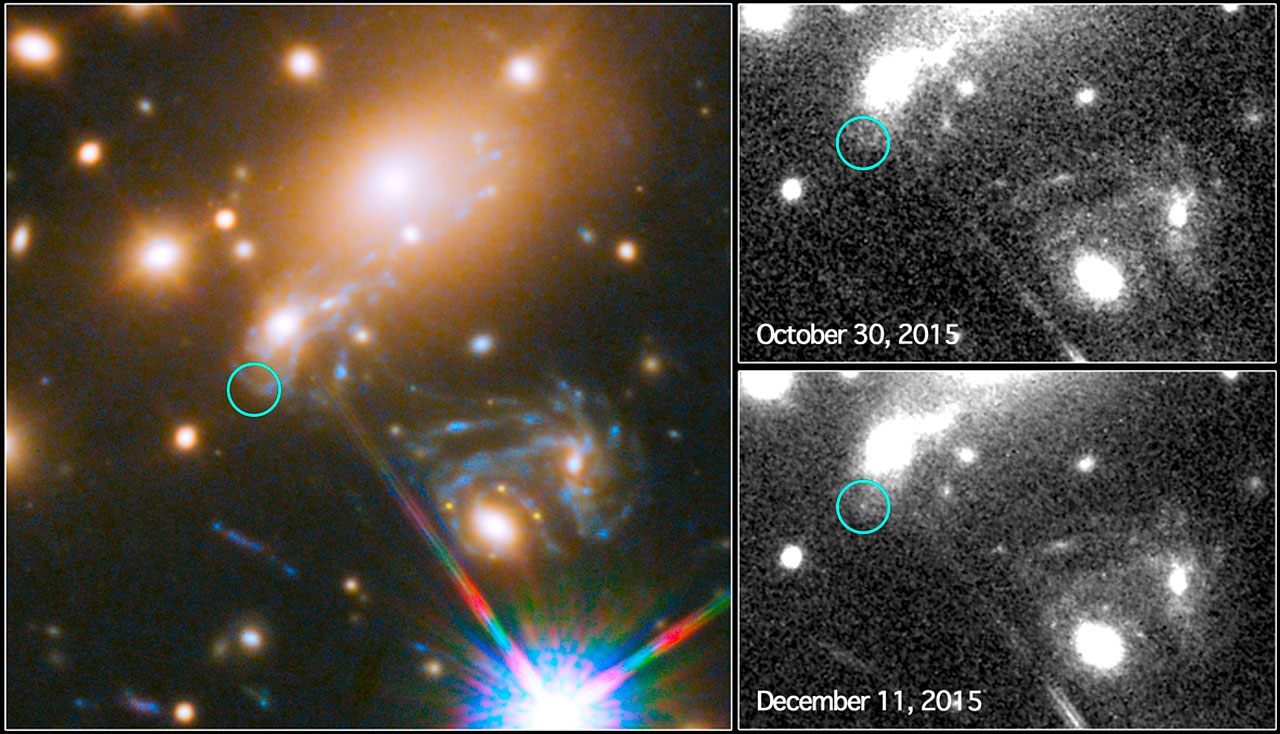FOUND: A Glimpse of a Supernova, Arriving Right on Schedule

The middle circle indicates the most recent appearance of the supernova (Image: NASA/ESA/UCLA/UC-Berkeley/et al)
It’s hard to spot a supernova. In any given galaxy, a star only explodes every few decades or so, and while in star time, that’s pretty frequently, in human time, it’s fairly rare.
Up until now, the only supernovae astronomers have caught have been during chance sightings. But astronomers working with the Hubble telescope have taken advantage of some special conditions to predict exactly when they might see a supernova explosion that happened billions years ago.
Astronomers call this particular supernova Refsdal, and it exploded 10 billion years ago. But over the vast distances of space, time gets a little weird. The light of the explosion has taken five billion years to reach our area of the universe, according to the Hubble Space Telescope team. Along the way, it had to pass close enough to a galaxy the mass of which warped the supernova’s light.
This adds another weird layer: astronomers can see three different images of the galaxy where the supernova exploded. But they show up at different times, because of the light warping. Using all these clues and “some very sophisticated modeling techniques,” the astronomers were able to predict within a fairly small window when they might be able to capture an image of the supernova that began 10 billion years ago.
And it worked. Starting in late October, they’d check every so often—did it happen yet? And then, on December 11, there it was. Light that had traveled over vast expanses of space to reach us and reveal the death of a star, long, long ago.

See that tiny dot of light appearing in the bottom right image? That’s the supernova. (Image: NASA/ESA/UC-Berkeley)
Bonus find: Really old gamma rays
Lost: A parakeet who speaks English, Spanish and Ukrainian
Every day, we highlight one newly lost or found object, curiosity or wonder. Discover something unusual or amazing? Tell us about it! Send your finds to sarah.laskow@atlasobscura.com.









Follow us on Twitter to get the latest on the world's hidden wonders.
Like us on Facebook to get the latest on the world's hidden wonders.
Follow us on Twitter Like us on Facebook